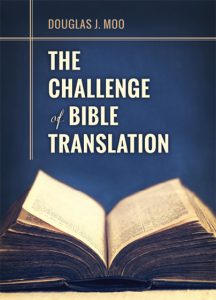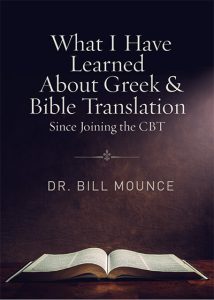Translation Philosophy of the NIV
When the books of the Bible were first written, they spoke clearly to those who heard it in their native language. There was no gap between hearing God’s Word and understanding it. The translation philosophy of the New International Version (NIV) is to recreate this experience for readers around the world in contemporary English.
Sometimes the Bible can feel like a foreign book. But that’s not how it felt to its original audience. The Scriptures captured exactly what God wanted to say to them in their everyday language and idiom. Those who heard God’s Word could understand it.
To be sure, there are plenty of things for us to wrestle with in the Bible. But the translation you choose to read shouldn’t be one of them. That’s the translation philosophy behind the New International Version (NIV): giving you the most accurate text possible in clear, natural English.
A Balanced Approach
Some Bible translations focus on the way Scripture was written—the form, grammar, even the word order of the original. The difficulty is that no two languages follow the same set of rules. That’s why translating Scripture is more than a matter of replacing Greek or Hebrew words with English equivalents.
Other Bible translations focus on the meaning of Scripture, helping you grasp the message of the Bible in your own words. The challenge with this approach is that if you stray too far from the form of the text, you might miss some of the subtle nuances—literary devices, wordplays, etc.—found in the original.
Even the best literal translation can’t follow the original form all the time. And even the best meaning-based translation can’t capture every detail of meaning found in the original.
In 1965, the original NIV translation committee pioneered a different approach: balancing transparency to the original with clarity of meaning. Our view is that if the first people to receive the Bible could understand God’s Word the way it was written, you should be able to as well.
The result of this effort was and continues to be the most loved and trusted modern-English Bible translation in the world. Read more about the NIV.
Translation Process
Every word choice, every update, every decision made in the New International Version is subject to a rigorous translation process, one designed to protect the NIV from bias and to ensure the most accurate translation possible in today’s English.
Before it was published, the NIV Bible went through perhaps the most rigorous translation process in history. The first edition, printed in 1978, was the labor of more than 100 evangelical biblical scholars. This careful attention to detail continues today.
Safeguarding the Text
The text of the NIV is entrusted to the Committee on Bible Translation (CBT), a self-governing body of 15 evangelical Bible scholars. No outside group—no publisher or commercial entity—can decide how the NIV is translated.
In keeping with the original NIV charter, the CBT meets every year to monitor developments in biblical and archaeological scholarship, as well as changes in English usage.
A Groundbreaking Study of the English Language
In preparation for the latest update to the NIV, published in 2011, the translators commissioned one of the most comprehensive studies of gender language in English ever done, drawing on the Collins Bank of English—a database of more than 4.4 billion words, taken from publications and spoken-word recordings spanning two decades.
Download the report on “The Development and Use of Gender Language in Contemporary English” prepared for the Committee on Bible Translation by Collins Dictionaries.
Read more from the translation committee on the changes made in the last update in 2011.
A High Threshold for Change
Every change to the NIV must be thoroughly vetted—and changing the text isn’t easy. In order to become part of the NIV, a change must receive the support of at least 70 percent of the translation team.
Such a high threshold among a denominationally diverse team of scholars helps to protect the NIV from agendas, bias, and outside influence—ensuring that any changes are backed by the very best biblical scholarship.
What is the result of such a rigorous translation process? A Bible you can trust, both now and in the future.
For more on the challenges of Bible translation, here are two papers from two of the CBT members:
The Challenge of Bible Translation
By Dr. Douglas J. Moo
What I Have Learned About Greek & Bible Translation Since Joining the CBT
By Dr. Bill Mounce




